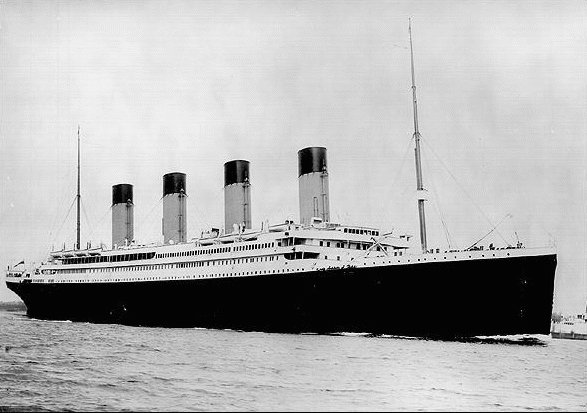Among the stories surrounding the sinking of the luxury liner Titanic in 1912 was a tale about an unlucky mummy whose curse was as responsible for that accident as that floating island of ice the tore open the ship's hull. Though the story had been around for years, it spread rapidly in the wake of the popularity of the film Titanic. The tale goes something like this:
In the late 1890's a rich, young Englishman visiting the archaeological digs near Luxor purchased the coffin and mummy of The Princess of Amen-Ra. He arranged for it to be shipped back to his home, but was not there to receive it. He disappeared, never to be found. One of his companions on the trip later died, another lost an arm in an accident and a third lost his fortune in a bank failure.
The coffin reached England and was purchased by a businessman. Three members of the businessman's household were injured in an auto accident and his house caught on fire. Convinced that the mummy was unlucky, the man donated it to the British Museum.
The staff at the museum reported hearing loud banging and crying noises coming from the coffin at night. Things were thrown around the exhibit room without explanation. Finally a watchman died. Then a photographer took a photo of the coffin. When he developed it, the image that appeared was so horrifying that the photographer killed himself.
The museum wanted to get rid of the unlucky mummy, but with it's reputation they could not even give it away. Finally, an American archaeologist, who didn't believe in the stories, purchased the mummy and coffin and had it sent back to the states on board the Titanic. The rest was, well, history...
Other version of this story has the archaeologist bribing the Titanic crew to have the mummy put into a life boat and later it winds up in New York City. The mummy is sold and shipped again and involved in one or two more shipwrecks before winding up on the bottom of the sea.
Is this a true story? Or just a weird tale?
Shipping records show no mummy was on board the Titanic (this may be why some versions of the tale say that the archaeologist smuggled it aboard). In no account by any Titanic survivor do they mention sharing a lifeboat with a mummy (which wouldn't have been easy to forget). Nor did any rescuer report taking a mummy on board.
The tale probably has its origins with two Englishmen named Douglas Murray and T.W. Stead. Murray and Stead claimed that an acquaintance of theirs bought a mummy in Egypt and had it placed in a drawing room in his home. The next morning every breakable item in the room had been smashed. The next night the mummy was left in another room with the same results..
The pair also visited the British Museum and saw the coffin lid of Priestess Amun (there wasn't ever a mummy, only the lid). They decided that the face depicted on it was a tormented horror. Combining the two stories, that of the breakable items and the scary lid, the two sold the tale to the newspapers. The tale later grew to include the Titanic.
The Titanic portion of the story may have been inspired by the loss of the Menkaure sarcophagus in 1838. The sarcophagus, which was being shipped from Egypt to England, was considered to be one of the finest examples of art from the Old Kingdom period. It went to the bottom of the sea when the ship carrying it, The Beatrice, sunk in deep water somewhere near Cartagena.
The truth is that the Priestess Amun coffin lid (British Museum item No. 22542) is still sitting quietly in the British Museum's second Egyptian room, where it can be seen today.

0 comments:
Post a Comment